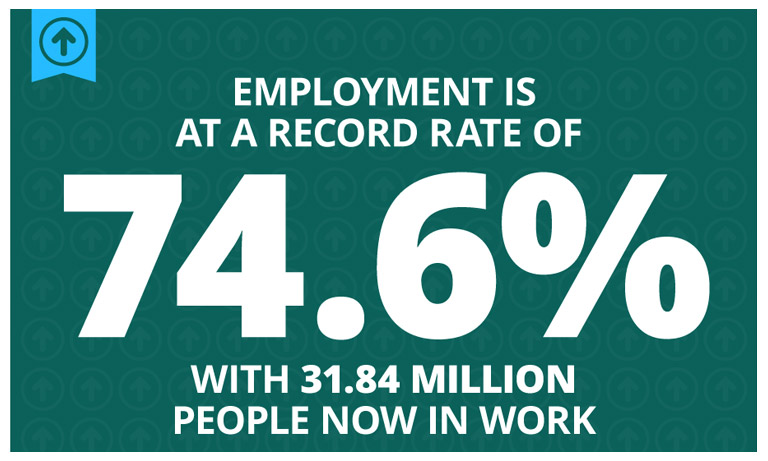 Full-time work continues to be the driving force behind the rise in employment. Average weekly wages grew by 2.3% including bonuses over the last year
Full-time work continues to be the driving force behind the rise in employment. Average weekly wages grew by 2.3% including bonuses over the last yearOfficial figures released show that the employment rate is at 74.6%, with 31.84 million people in work – an increase of 312,000 on the year and the joint highest rate since records began in 1971.
The Office for National Statistics has also announced that the unemployment rate remains low at 4.7%. It has not been lower since 1975.
Full-time work continues to be the driving force behind the rise in employment. Average weekly wages grew by 2.3% including bonuses over the last year. Wage growth has remained above 2% every month since the beginning of 2016.
Secretary of State Damian Green said: “This is yet another strong set of figures, with unemployment at a rate that hasn’t been beaten since the 1970s and more vacancies than ever before.
“More people are finding full-time jobs and average wages have grown yet again, meaning more families have the security of a regular wage.
“However, there is always more to do. That’s why we’re creating a welfare system that rewards work through Universal Credit, which helps claimants keep more of the money they earn.”
April’s figures also show:
- There are 1.56 million unemployed people, 141,000 fewer than this time last year.
- The number of people in full-time employment grew by 146,000 in the last 3 months.
- The unemployment rate of 16 to 24 year olds who have left full-time education is 10.9% – a decrease of 1.3% from last year.
- Long-term unemployment is at 389,000 – the lowest since 2008.
Separate figures out today show 1.1 million claims have been made to Universal Credit. Of the 490,000 people now claiming Universal Credit, nearly 40% are in work.
Join Over 40,000 Recruiters. Get our latest articles weekly, all FREE – SEND ME ARTICLES
Recruiters love this COMPLETE set of Accredited Recruitment & HR Training – View Training Brochure








